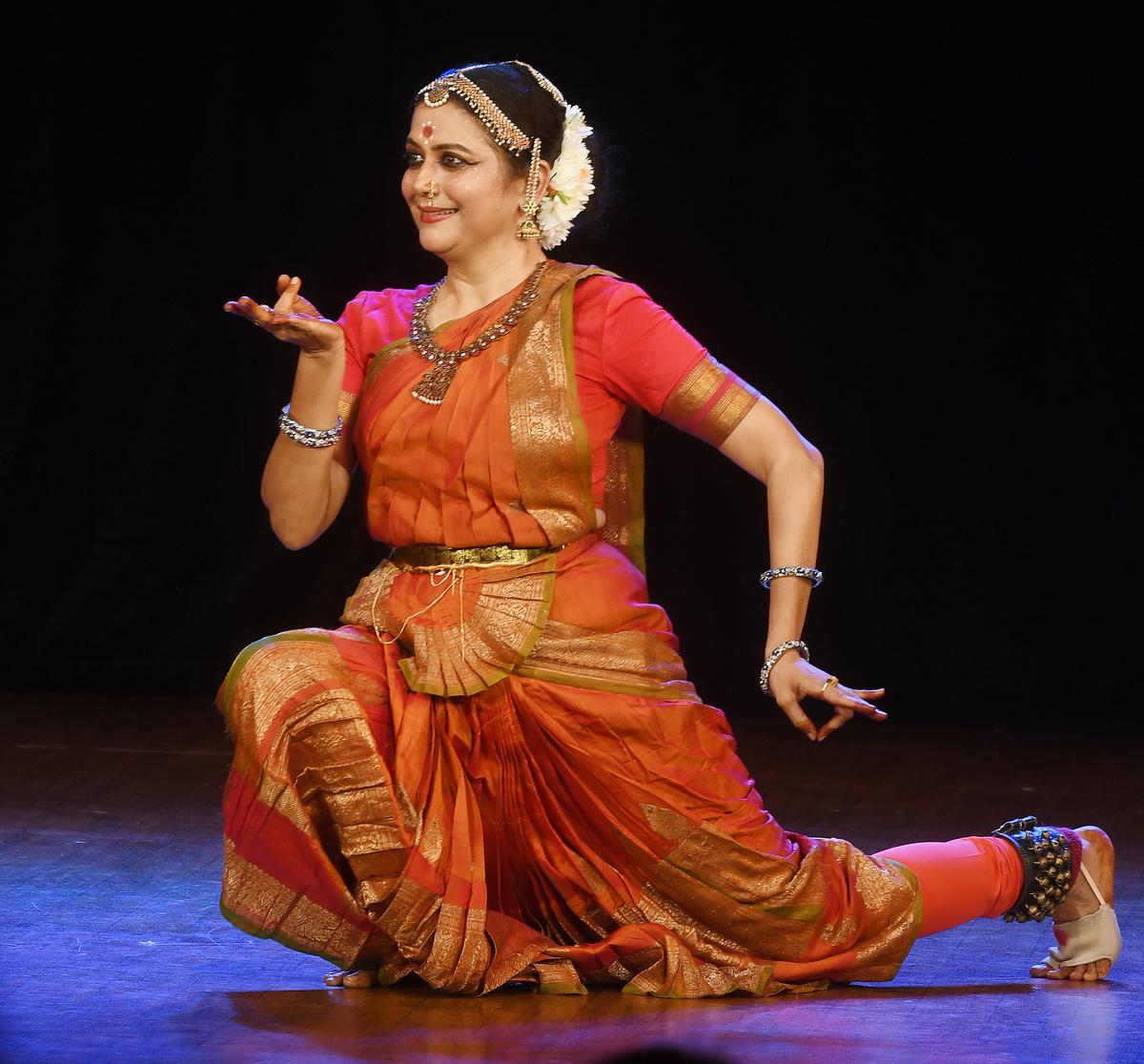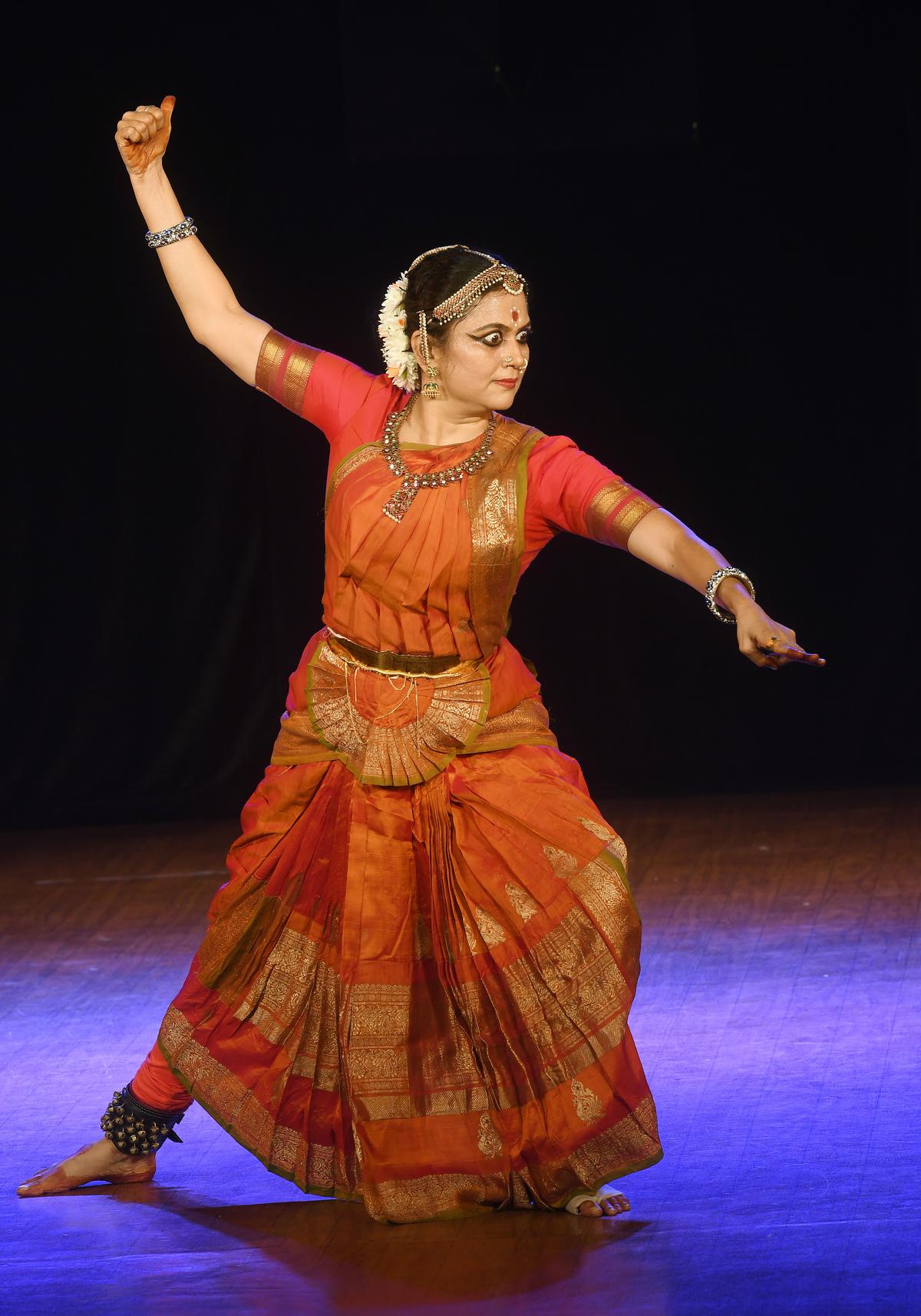
Pavithra Srinivasan performing at Sri Krishna Gana Sabha’s Pongal Dance Festival, 2023, in Chennai..
| Photo Credit: R. RAVINDRAN
Sometimes, artistes go into an introspective journey, oblivious of extraneous factors. This is so essential for their artistic expression. Dancer Pavithra Srinivasan did just that, when she passed on the joy of her immersive explorations to viewers at the concluding performance of the Pongal dance festival organised by Sri Krishna Gana Sabha.
Samba Shivayanave, the central piece, is popular in music concerts but not often seen in the dance repertoire. This Swarajathi composed by Chinna Krishna Dasar in raga Khamas and set to Adi tala, describes the glory of Shiva and his consort Amba who reside atop the snow-clad mountain. The depiction of Nandi looking at the Lord and Devi with admiration; characterisation of the individual traits of the two before their union to become ardhanari; Markandeya’s story, where the laughter of Yama was highlighted without it being harsh and over dramatic; the subtlety of expressions in the story of Gundodhara eating and drinking everything, leading to Shiva bringing Ganga down to Earth; and Amrita manthan and Shiva drinking poison were some sancharis that Pavithra depicted with finesse and grace.

The addition of Pavithra’s personal experience of the Kailash yatra to the narrative for the line ‘Rajitha giri’ stood out — minute details such as the legs aching after climbing the mountain, travelling by mule, and looking up at the mountain with a sense of admiration and fear while looking down, and the expression when her feet touch the icy waters.
The chanting of the panchakshara mantra Om Namah Shivaya while Pavithra elaborated the pancha bhootas and pancha Indriyas slowly moved on to a spiritual plane as the music and rhythm tapered down to silence.

The sringara rasa of a lovelorn heroine besotted by lord Muruga, as visualised in the Madhuvanti raga song ‘Kanda naal mudhalai’ by N.S.Chidambaram, followed. From the portrayal of the grace of a peacock, the communication of coyness and passion of the nayika through her eyes, the blooming of flowers encircled by bees, and the landscape filled with romantic allegories, Pavithra’s dance reflected that joy.
Having embarked on a journey to visualise the essence of each chapter of the Bhagavad Gita, Pavithra concluded the show with ‘Arjuna vishada yogaha’, a dialogue between Arjuna and Krishna in the first chapter. The percussion sounds used dramatically for war cry and the movement of the eyeballs to showcase Dhritarashtra’s blindness were impactful.
The nuanced percussion support of R. Sriganesh for the theermanams in the Swarajathi and Bhagavad Gita was noteworthy. The nattuvangam was by N.S. Anantashri, vocal support by Roshni and violin by Nandini Sai Sridhar.
Stay connected with us on social media platform for instant update click here to join our Twitter, & Facebook
We are now on Telegram. Click here to join our channel (@TechiUpdate) and stay updated with the latest Technology headlines.
For all the latest Entertainment News Click Here
For the latest news and updates, follow us on Google News.
